Blame Britain’s Traitorous Political Class for Bringing these Monsters to England
All three of the latest Muslim terrorists were immigrants to this country and therefore had the right to passports other than British and consequently could in principle have been deported. RH
Telegraph
Youseff Zaghba named as third London terrorist – Everything we know about him
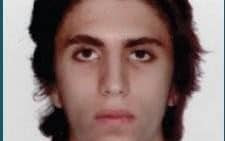 Youseff Zaghba, has been named as the third London terrorist
Youseff Zaghba, has been named as the third London terrorist
- Martin Evans, crime correspondent
- Nick Squires
6 JUNE 2017 • 2:45PM
The third London terrorist has been named as Moroccan born Youseff Zaghba, Scotland Yard has confirmed.
The 22-year-old, who was born in the city of Fez in January 1995, had a Moroccan father and an Italian mother.
He was reportedly arrested at Bologna airport in March 2016 trying to get to Syria and was also understood to be on an Italian anti-terror watch list.
Youseff, had recently moved to east London and was working in a restaurant. 

Khuram Butt and Rachid Redouane were the other two terrorists
According to reports in the Italian press, Zaghba, grew up with his parents in Morocco until they split when he was a child.
He then regularly stayed with his father but regularly visited his Italian mother at her home just outside the northern city of Bologna.
He was there last year and after telling his mother he was going to Rome, bought a one way ticket to Istanbul.

Youseff Zaghba was arrested last year at Bologna airport trying to get to Syria
Carrying only a rucksack, he was stopped by Italian security services at the airport and was arrested on suspicion of trying to make his way to Syria.
Italian police seized his mobile phone and found a large amount of religious content, but nothing that necessarily suggested an interest in jihad.
But it has also emerged that he had been placed on an Italian watchlist for potential terrorists after his behaviour raised concern with the intelligence services.
A spokesman for Scotland Yard said Zaghba was not known to the police or MI5, unlike Butt, who had been the subject of a lengthy investigation because of his radical views and behaviour.
Telegraph
Khuram Butt and Rachid Redouane named as London Bridge terrorists – everything we know about them
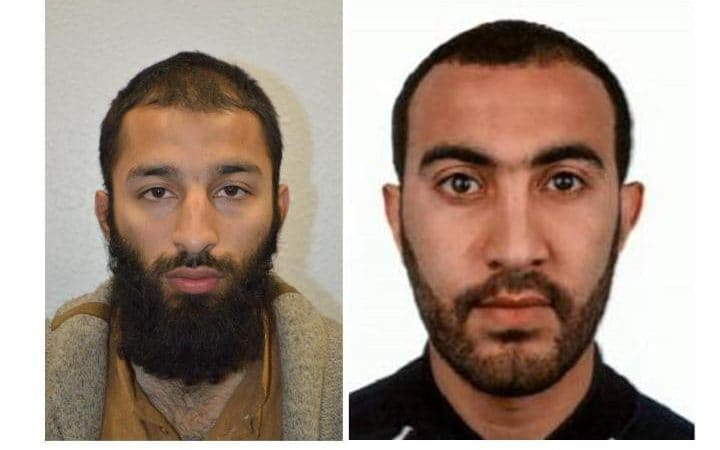 Khuram Butt, left, and Rachid Redouane
Khuram Butt, left, and Rachid Redouane
6 JUNE 2017 • 2:20AM
The ringleader of the London Bridge terror attack who was photographed on the ground with canisters strapped to his body was today named by police as Khuram Butt.
Butt, 27, of east London, is believed to have led the trio of terrorists who ploughed into pedestrians using a hired van, before stabbing revellers in pubs and bars on Saturdaynight. Police continue to investigate the atrocity that left seven dead and 48 injured.
Assistant Commissioner Mark Rowley said Butt was known to police and MI5 but said there had been no evidence of “attack planning” and he had been deemed as a ‘low priority.’
A second man, 30-year-old Moroccan-Libyan Rachid Redouane, was named by police as one of the other two attackers. He was unknown to police. Redouane, who also used the name Rachid Elkhdar, claimed to be six years younger than his true age and lived in a tower block not far from Butt.
The third man, who has not yet been named, is not a UK citizen.
All three were shot dead by armed police in the Borough Market area of south London, eight minutes after launching the attack.
Khuram Butt
The ringleader of the London Bridge massacre never bothered to hide his violent, extremist views.
Khuram Butt was so brazen that he openly posed with the black flag of the so-called Islamic State in Regent’s Park in the centre of London for a Channel 4 documentary, entitled The Jihadis Next Door.

Abu Zeitoun, born as Khuram Butt, after being shot and killed by police at Borough London CREDIT: GABRIELE SCIOTTO
Butt and other extremists linked to the banned terror group al-Muhajiroun were even detained by police for an hour over the stunt in 2015 but were released without being arrested.
In the film, screened in January 2016, Butt appears on camera, intervening when police attempt to search one of the group’s leaders. Butt raises his voice, angrily asking them: “Why are you touching him?” In another clip, he requested a compass in order that he could pray towards Mecca.
As a consequence, MI5 and counter-terrorism officers began an investigation into Butt, which remained ongoing even as the 27-year-old launched his terror attack on London Bridge. Butt, who was wearing an Arsenal shirt and a fake bomb strapped to his chest, was shot dead by police on Saturdaynight.
Butt’s known links to al-Muhajiroun will raise serious concern that he wasn’t stopped prior to the atrocity. The group, which was banned shortly after the 7/7 bombings in 2005, and its successor organisations have been connected to a quarter of all Islamist terror offences and plots.
Butt reportedly arrived in the UK from Pakistan as a child refugee. His father is said to have worked at a fruit and vegetable stall in east London, but died in 2003, when Butt would have been a teenager.
One witness claimed to have seen Butt in the streets around Borough Market a week before Saturday’s attack, while reports on Monday night suggested the three men had done a “dry run” in the minutes before they targetted pedestrians on London Bridge. Their van was caught on CCTV travelling across the bridge nine minutes before the attack, reportedly allowing the terrorists to check the amount of traffic, the number of potential victims and whether there were any police around.
It emerged on Monday that Butt had “verbally assaulted” an anti-terrorism campaigner at a rally in parliament led by the notorious hate preacher Anjem Choudary the day after the murder of Fusilier Lee Rigby in May 2013.
Mohammed Shafiq, chief executive of the Ramadhan Foundation, which promotes Islamic tolerance, said: “Khuram Butt called me a ‘Murtad’, which means traitor in Arabic, and accused me of being a government stooge when I confronted Anjem Choudary about him supporting terrorism.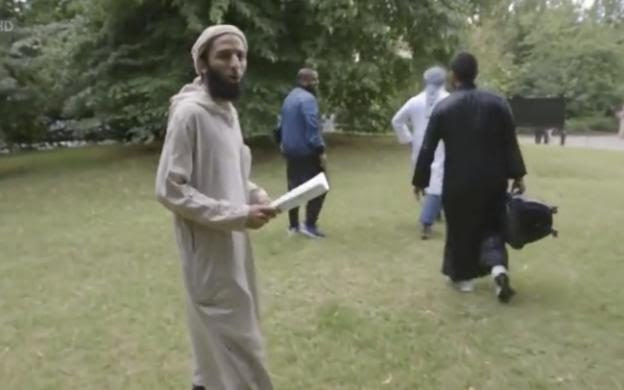

Abu Zeitoun CREDIT: CHANNEL 4
“The police turned up and Anjem, Khuram Butt and two other men were escorted away towards Millbank and I stayed in College Green. I am not surprised that Khuram Butt carried out the terrorist attack and there are serious questions for the authorities.”
Butt, who lived in a ground floor flat in east London, had also twice been reported to anti-terror police by friends and neighbours concerned about his extremist views.
A former friend claimed Butt, who is understood to have worked for a fried chicken chain and for London Underground as a trainee customer services assistant for six months until October, had been radicalised after watching videos on YouTube. The friend said he contacted the authorities after becoming concerned over Butt’s obvious extremist views.
A neighbour Erica Gasparri said she had also contacted police after Butt tried to ‘brainwash’ her children in the local park and convert them to Islam.
Butt, who was married with two children, had also been ejected from a nearby mosque after a confrontation with an imam.
Butt was a football supporter, a kickboxer and a regular at a local gym – the Ummah Fitness Centre – which caters predominantly for Muslims.
Channel 4 said yesterday that police had contacted them about the documentary and requested the broadcaster not to comment.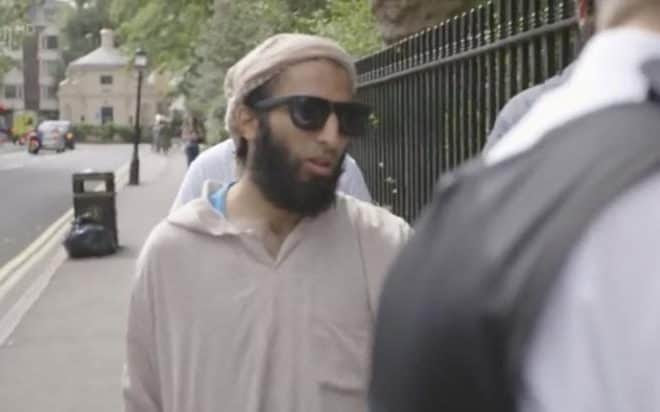

Khuram Butt from Channel 4 documentray The Jihadis Next Door
In The Jihadis Next Door, Butt appeared alongside Mohammad Shamsuddin, who appears to have become the de facto leader of the remnants of al-Muhajiroun following the jailing of its founder Omar Bakri Muhammad, who is languishing in a Lebanese prison, and Choudary, who is serving a five-and-half-year sentence for terror offences in the UK.
An authoritative analysis of all Islamist terrorism offences and attacks in the UK between 1998 and 2015 shows 25 per cent have been committed by perpetrators with links to al-Muhajiroun and its various incarnations.
Those plots include the murder of Lee Rigby, committed by Muslim converts Michael Adebolajo and Michael Adebowale, who had been radicalised by Choudary as early as 2007.
Another senior figure in the group was Siddhartha Dhar, who skipped bail while under investigation over his association with Choudary, and fled to Syria to fight with Islamic State. Dhar replaced Mohammed Emwazi, known as Jihadi John, as the terror group’s notorious executioner. Dhar also appeared in the Channel 4 film until he fled to Syria.
The documentary concentrated on Shamsuddin and another preacher known as Abu Haleema. Choudary, Dhar, Shamsuddin and Abu Haleema were arrested together in September 2014.
Shamsuddin, 40, admitted in the documentary he had been radicalised by Bakri, a Syrian born extremist who founded al-Muhajiroun, while at university.
In the documentary, Abu Haleema and Shamsuddin are filmed laughing as they watch Islamic State execution videos. Haleema was shown calling for homosexuals to be thrown from tall buildings, alcohol to be outlawed and adulterers to be stoned to death on Haven Green near Ealing, in West London.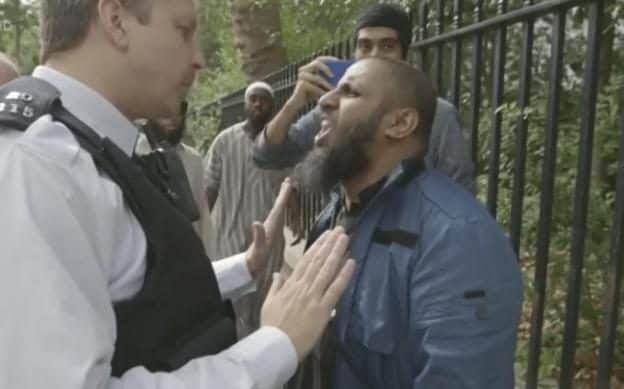

Mohammed Shamsuddin
The documentary, filmed over two years by director Jamie Roberts, also showed Shamsuddin calling for David Cameron to be arrested under Sharia law.
“The Sharia is coming to the UK – this black flag you see here one day is gonna be on 10 Downing Street,” he said.
He later told the filmmakers: “Our message is deadly, we are calling for world domination, and for Sharia for the UK.”
Shamsuddin said that his views were “moulded” by Bakri – dubbed the Tottenham Ayatollah – who is now in jail in Lebanon for supporting terrorism.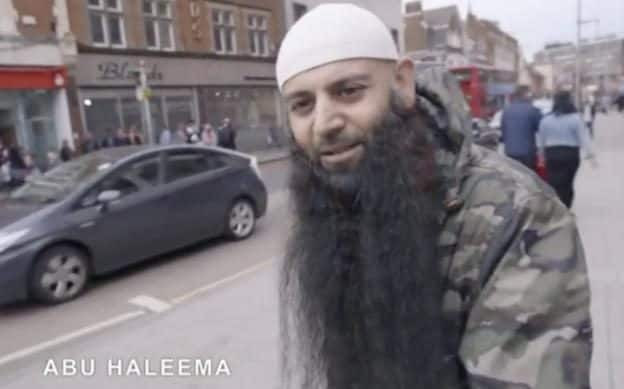

Abu Haleema
Haleema and Shamsuddin were also arrested in August 2015 during anti-terror raids, but no further action was taken.
Rachid Redouane
A Moroccan chef who took part in the London terrorist attack is believed to have visited his estranged wife hours before the attack so he could say goodbye to their daughter.
Rachid Redouane was seen visiting his wife, Charisse, only three hours before he and two accomplices killed seven by ramming crowds with a van and then launching a knife rampage, neighours said.
One neighbour told the Telegraph he had even stood next to the terrorist in a lift as he went up to his wife’s apartment.
The man, who wished to remain anonymous, and who lives in the same apartment block as Redouane’s wife, said: “I was standing right next to him in that lift”.
“I’ve seen him four or five times, he’s come here often to see his daughter. He didn’t say a word, we just stood there silently until we got to his floor.
“It was only the next day when my mate told me about the attacks that I realised it was him. It’s scary you know. I don’t like the fact that my kids were living in the same block as this guy. He was there at 7pm.”
Large numbers of police then arrived at the block of flats on Sunday after the attack.
Another couple living in the same block, just a few hundred yards from where another attacker, Khuram Butt lived, also told the Telegraph that Redouane had visited on Saturdayevening.
The couple, who were aged in their 20s and wished to remain anonymous, said that the man had then left the apartment block and had signed out at reception.
The man said: “The whole block is talking about it, about he came to say goodbye to her and his daughter before they left.
“The police came yesterday morning, there were dozens of them. We know he signed out at reception because guests visiting have to.
“He was here just before it all happened.”
Redouane and his wife are reported to have split up over their differing views on religion, after they clashed over the best way to raise their child.
Redouane is listed on his daughter’s birth certificate as Moroccan and gives his profession as pastry chef. However police said he also claimed to be Libyan and has in the past used the name Rachid Elkhdar, claiming to be six years younger.
Redouane was not known to the security services, according to a police statement.
An Irish ID card was found on his body after he was shot dead by armed police in Borough Market, Southwark. The plastic credit card-sized document is believed to have been issued by the Garda National Immigration Bureau and is given to people from outside the EU.
The card has a person’s certificate of registration which states they have permission to stay in Ireland. It must be carried at all times.
Redouane married his 38-year-old wife in Ireland in 2012 and they later moved to the UK. His wife never converted to her husband’s faith, and they had recently split up, the Guardian reported. A friend said they had clashed over how to raise their daughter.
On social media Redouane’s wife, whose maiden name was O’Leary, had recently described herself as single and at one point complained that her daughter’s father was not seeing his child.
Redouane had been living in the Rathmines area in the south of Dublin while in Ireland, according to Irish police sources, and had spent time there as recently as three months ago.
Enda Kenny, the Taoiseach, said while on a trade mission to Chicago that the dead terrorist is not believed to have been under surveillance by Irish police.
He said: “There are a small number of people in Ireland who are being monitored and observed in respect of radicalisation and matters relevant to that.
“In this case these facts are being checked, but my understanding is that this individual was not a member of that small group.”
The Irish police are reportedly watching up to 12 foreign nationals, mainly of north African origin, over suspected links to extremist groups.
Garda are understood to be piecing together Redouane’s movements in the country over recent years and whether he was radicalised in the country.
As details of Redouane’s Irish links were disclosed, a Muslim imam and scholar based in the country said Irish authories had repeatedly ignored his warnings about local activists from the Islamic State in Iraq and Levant (Isil) group and al-Qaida activists.
Shaykh Dr Umar al-Qadri said neither the police nor the justice department contacted him after he warned there was an Islamist extremist presence in Dublin.
The third attacker
The third attacker remains unnamed more than two days after he joined in a murderous rampage with Khuram Butt and Rachid Redouane.
Assistant Commissioner Mark Rowley, Britain’s most senior counter-terrorism policeman, said that inquiries are “ongoing to confirm the identity” of Butt and Redouane’s accomplice.
However counter-terrorism sources said they were almost certain of his identity and an announcement of his name was being delayed because he was not a British national.
The disclosure that he is not British will raise questions about how recently he moved to the UK and under what circumstances he had entered the country.
Witnesses during to the knife rampage through Borough market said that two of the attackers appeared to be of Mediterranean appearance. That will raise the possibility that the third man was another North African, like Redouane.
Police on Monday continued to raid and search addresses across east London and it was not clear if any of these were linked to the third attacker.
Telegraph
Analysis: Five questions MI5 must answer over the recent terror attacks
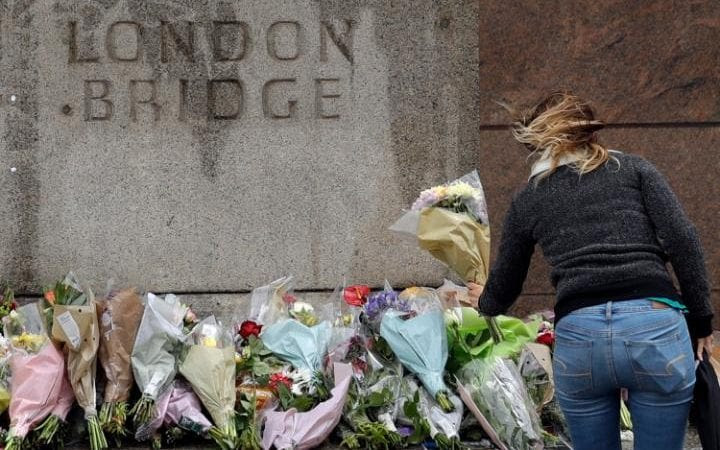 A woman places flowers on London Bridge after the latest terror atrocity to hit BritainCREDIT: MATT DUNHAM/AP
A woman places flowers on London Bridge after the latest terror atrocity to hit BritainCREDIT: MATT DUNHAM/AP
6 JUNE 2017 • 10:44PM
After three terror attacks in three months, Britain’s intelligence agencies are facing questions about the way they scrutinise terror suspects.
Salman Abedi, who carried out the suicide attack in Manchester, travelled between Libya and Britain, and was known to intelligence agencies in Germany and France. Khuram Butt, the leader of the London Bridge plot, even appeared on a documentary The Jihadis Next Door. And today it turned out that one of his co-conspirators, Moroccan-
So what are the questions the Prime Minister will be asking Andrew Parker, Director General of MI5?
1 .Why was Youssef Zaghba allowed into the UK?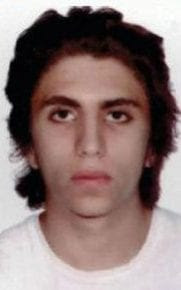
Youssef Zaghba, the third London Bridge attacker CREDIT: REUTERS
He may have been an Italian citizen, but “freedom of movement” in EU treaties by no means oblige EU countries to allow in European citizens if they are deemed a threat to security. Think of the Dutch firebrand Geert Wilders, who has been banned from entering Britain. So why was Zaghba allowed in? Were MI5 watching him, in the hope that he would lead them to British terrorists? Or did they simply dismiss the idea that he was a serious threat? Which leads on to question 2:
2. How on earth was Khuram Butt allowed access to the Tube network last year?

Khuram Butt worked for London Underground CREDIT: AFP
In one of the most remarkable revelations so far, it seems that for much of 2016, Khuram Butt, the London Bridge ringleader, worked for the London Underground, and had access to tunnels – even under Parliament. This just a year after he appeared on the film The Jihadis Next Door. How was he allowed access to such a sensitive piece of British infrastructure?
Some clues to the answer might be gleaned from the Intelligrence Select Committee report into the Woolwich killing of Lee Rigby in 2013. This was highly unusual in that it provided extensive evidence of the working methods of British intelligence services, including the categorisation of so-called SOIs, or “Subjects of Interest”.
Investigations, the report noted, are classed into four levels of risk – P1-P4.
Priority 1 – Attack Planning (P1a and P1b)
Investigations into individuals or networks where there is credible and actionable intelligence of significant (P1a) or smaller scale (P1b) attack planning
Priority 2 – high and medium risk activity (P2H and P2M)
Investigation into individuals or networks where there is for example: • a serious intent to travel overseas to join Jihad (P2H). • large scale fundraising (P2H). • significant terrorist training (P2H). • supply of false documents (P2M). • smaller scale fundraising (P2M).
P3 – Investigations into uncorroborated intelligence / International Counter Terrorism (ICT) prisoner on release
Investigations or networks that require further action to determine whether they pose a threat.
P4 – Risk of re-engagement
Those who have previously posed a serious threat to national security who we judge are not currently involved in such activities but there is a risk of re-engagement.
A thorough process by which these prioritisations are analysed each week, with input from police. The Home Secretary is informed of this each week via letter.
It is clear that Butt should have been a Priority 1 SOI. Presumably he was not. But it is interesting to note that all of Priority 2 cases still sound very dangerous, though they merit fewer resources. And it is also clear to note that SOIs who have fallen off the watch list or, in the words of the report “have previously posed a serious threat to national security who we judge are not currently involved in such activities” are placed in the lowest priority. This could account for several suspects in the three recent attacks.
According to the ISC report, in 2013 an estimate of the number of “live” investigations, by category, was as follows:
– a handful of P1a (large scale attack planning) and P1b (small scale attack planning);
– around a hundred P2H (high risk activity);
– over a hundred P2M (medium risk activity);
– fewer than a hundred P3 (uncorroborated);
– fewer than 50 P4 (dormant and disrupted).
3. Why were such serious threats not being monitored?
This is obviously a potential categorisation problem. Clearly P1 cases have serious resources devoted to them. But Andrew Parker might well respond by pointing once again to MI5’s immense workload – contrasting its number of officers, numbering in the few thousand, with the 23,000 extremists believed to be in the country. The total number of SOIs that MI5 can surveil around the clock is believed to be just a few dozen – 50 or 60.
Prof Peter Neumann, an expert on terrorism from King’s College London, has suggested that 20 to 25 people are required to keep one suspect under 24/7 surveillance. The security agencies – MI5, MI6 and GCHQ – are thought to have roughly 12,000 staff in total. They are looking to recruit an additional 1,900 intelligence officers and analysts by 2020.
Resources also must be contrasted with the number of new leads received. For example this week Britain’s top counter-terrorism officer Mark Rowley said Butt was known to the security services, but there was no evidence of “attack planning” by him. The report into the Rigby attack noted that:
“Intelligence Leads and Traces are tested for links to existing investigations and forwarded to the appropriate team where those links exist. Alternatively, where they do not relate to existing investigations, Leads are tested for credibility and a new investigation is launched if appropriate. During the week prior to the Woolwich attacks MI5 received [ hundreds of] International Counter Terrorism (ICT) leads.”
This led to serious criticism in the ISC report that low priority investigations at MI5 take too long:
“The majority of the investigations into Adebowale [one of Rigby’s killers] were low priority, based on the intelligence about him known at the time. As a result they suffered very significant delays (longer even than the average). The length of time taken in such investigations is unacceptable: MI5 must be able to progress low priority casework even when running high priority investigations.”
The eight months it took for MI5 to start investigating Adebowale (three months to identify him followed by five months of inaction) is unacceptable … There is a problem with the time taken to investigate low priority cases and MI5 must seek to address this by introducing deadlines.”
Lastly, the report suggested that “no effective programmes for managing large numbers of people who may pose risk to national security”:
“Clearly, MI5 must focus primarily on the highest priority individuals. However, that leaves a large group of individuals who may also pose a risk to national security, but who are not under active investigation. Previous attempts by MI5 and the police to manage this group have failed: we have not yet seen any evidence that the new programme, established in late 2013, will be any better. This is an important issue and the Committee will continue to take a close interest in it in order to ensure that the necessary improvements are made.”
Have the criticisms been remedied between 2013 and today? All seem relevant to the London Bridge case.
4. Co-operation? Are MI5, MI6, the police and GCHQ co-operating properly?
Every intelligence chief will seek to deflect blame or at least distract attention from any attribution of blame. But it is clear that they must work together to be effective. In the London Bridge plot, MI6 was tipped off about Youssef Zaghba by the Italians. Presumably this tip was passed on to MI5 as Zaghba arrived in the UK. To what extent did MI5 then ask GCHQ for intelligence on Zaghba’s communications? 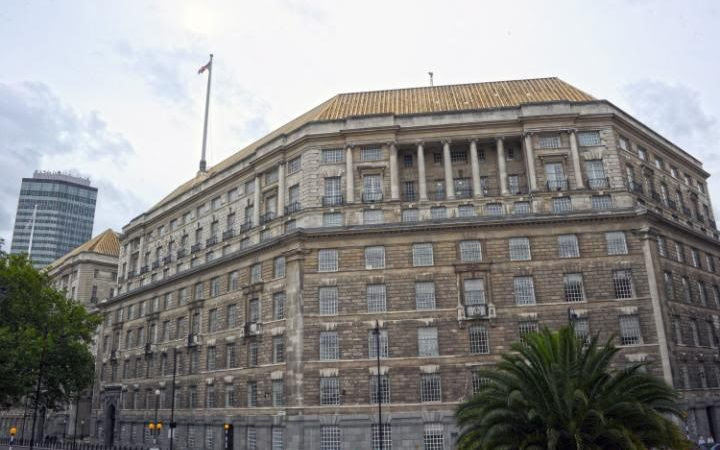

MI5’s headquarters in central London CREDIT: EPA
After the Lee Rigby murder, the ISC report noted serious failings in the cooperation between GCHQ and MI5, which “would have led to different investigative decisions”. It also noted that “there is insufficient co-ordination between MI5 and police investigations. MI5 and the police must improve both the process and the level of communication.” But have they?
MI6, also known as SIS, was also criticised at the time. “SIS’s role in countering ‘jihadi tourism’ does not appear to have extended to any practical action being taken,” the report noted. “SIS must ensure that their procedures are improved so that this does not happen again. This is particularly important given the current challenges faced by the Agencies in countering ‘jihadi tourism’ in Syria and Iraq.”
That was in 2013. In 2016, certainly, Zaghba was arrested by the Italians, who stopped him flying to Syria, but not charged. But then he was able to enter Britain without hindrance. Why? When one of Lee Rigby’s killers was arrested on “jihadi tourism” there was a four-month delay in opening an investigation.
“Where an individual is believed to have been seeking to join a terrorist organisation overseas, there should be no such delays,” the Rigby report insisted. “This must be addressed as a matter of urgency.” Has it?
5. Did government, or the Home Office, turn down requests for warrants?
Given that Theresa May was Home Secretary for so long, this question could be very sensitive indeed. She might rephrase it: Is the legal process for authorising surveillance too onerous? In 2013, it seemed the answer was categorically – and surprisingly – “Yes”. Has that, or will that, now change?
“There were several occasions during our Inquiry when we were surprised that MI5 did not at those specific times place one or other of the men under surveillance or increase their coverage of them. However, on each occasion MI5 has said that they did not have sufficient cause to obtain authorisation for such actions: in order to take intrusive action they must meet the rigorous threshold set down in law, and be able to demonstrate that the action is both necessary and proportionate, in order to gain approval from the Home Secretary. These points demonstrate how high the threshold for intrusive action is in practice.”
Telegraph
London attacker let into UK despite saying he was ‘going to be a terrorist’ as questions grow over lapses
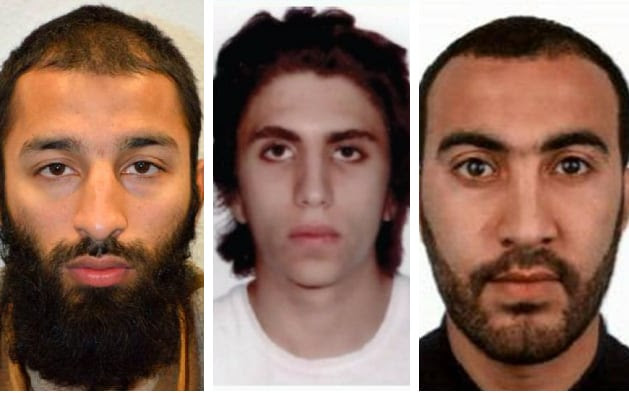 Questions are growing over why the London attackers, Khuram Butt, Youseff Zaghba, and Rachid Redouane were not stopped
Questions are growing over why the London attackers, Khuram Butt, Youseff Zaghba, and Rachid Redouane were not stopped
- Ben Farmer
- Nick Squires, fagnano
- Robert Mendick, chief reporter
7 JUNE 2017 • 7:16AM
One of the London Bridge terror attackers was allowed to enter the UK despite Britain’s intelligence agencies being told he wanted “to be a terrorist”.
Youseff Zaghba was placed on an international ‘watchlist’ of suspected foreign fighters after the Italian police caught him trying to travel to Syria last year.
The Italians claim both MI6 and MI5 were informed of the fears surrounding Zaghba, who told police he was “going to be a terrorist” when he was stopped at Bologna airport.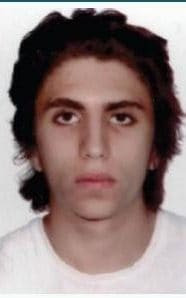

Youssef Zaghba was on a terror watchlist
But the 22-year-old Italian national was still able to enter the UK and went on to join Khuram Butt and Rachid Redouane in Saturday’s van and knife rampage in central London.
As the row threatened to overshadow the final days of the general election, Theresa May was facing questions over the actions of the intelligence agencies and the Home Office at a time when she was Home Secretary.
During a campaign rally in Slough she announced plans to sidestep human rights laws to toughen controls on terror suspects by tightening limits on their internet use and increasing curfews
London Bridge terrorists: What we know so far
